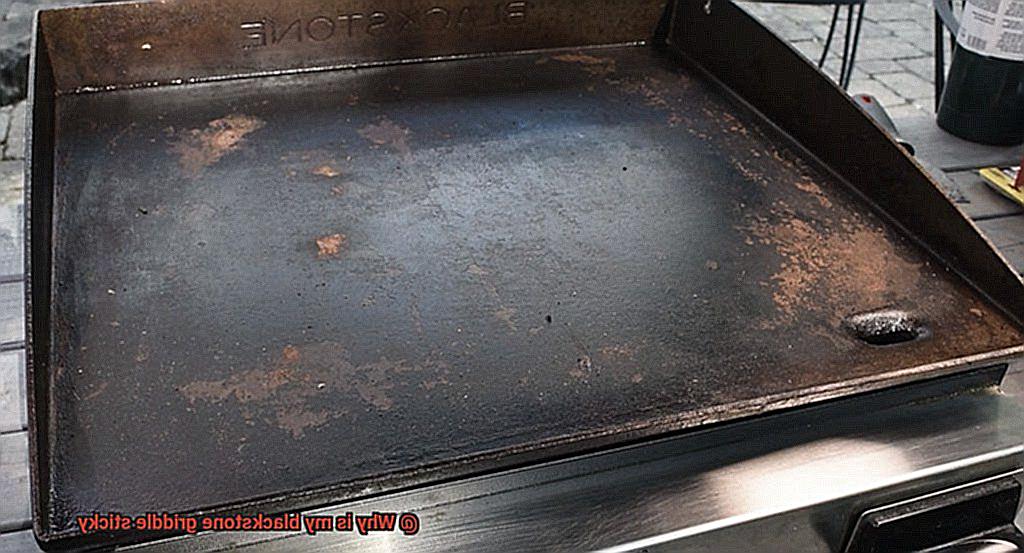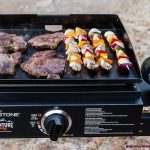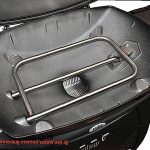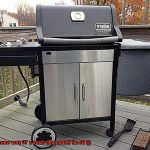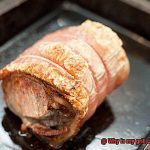Are you feeling frustrated with your beloved Blackstone griddle lately? Are you finding it hard to clean the surface due to its stickiness? Don’t worry, friend – you’re not alone. Many griddle enthusiasts have faced this issue at some point in their cooking journey. But fret not, as we are here to help you understand why your Blackstone griddle might be sticky and offer some easy solutions to get it back to its original, non-sticky state.
The main culprit for a sticky griddle surface is often the residue buildup from previous cooking sessions. The accumulation of oil, grease, and food debris can leave a sticky, grimy layer on your griddle that’s tough to remove. In addition, improper cleaning techniques can also contribute to a sticky griddle surface. If you’re using the wrong chemicals or not cleaning your griddle properly, you could be promoting the buildup of sticky residue.
But don’t despair. In this blog post, we’ll guide you through the steps to properly clean and maintain your Blackstone griddle to keep it non-sticky and cooking efficiently. We’ll cover everything from choosing the right cleaning products to utilizing proper cleaning techniques so that your Blackstone griddle stays in tip-top shape.
So let’s dive in together and solve the mystery of the sticky Blackstone griddle once and for all.
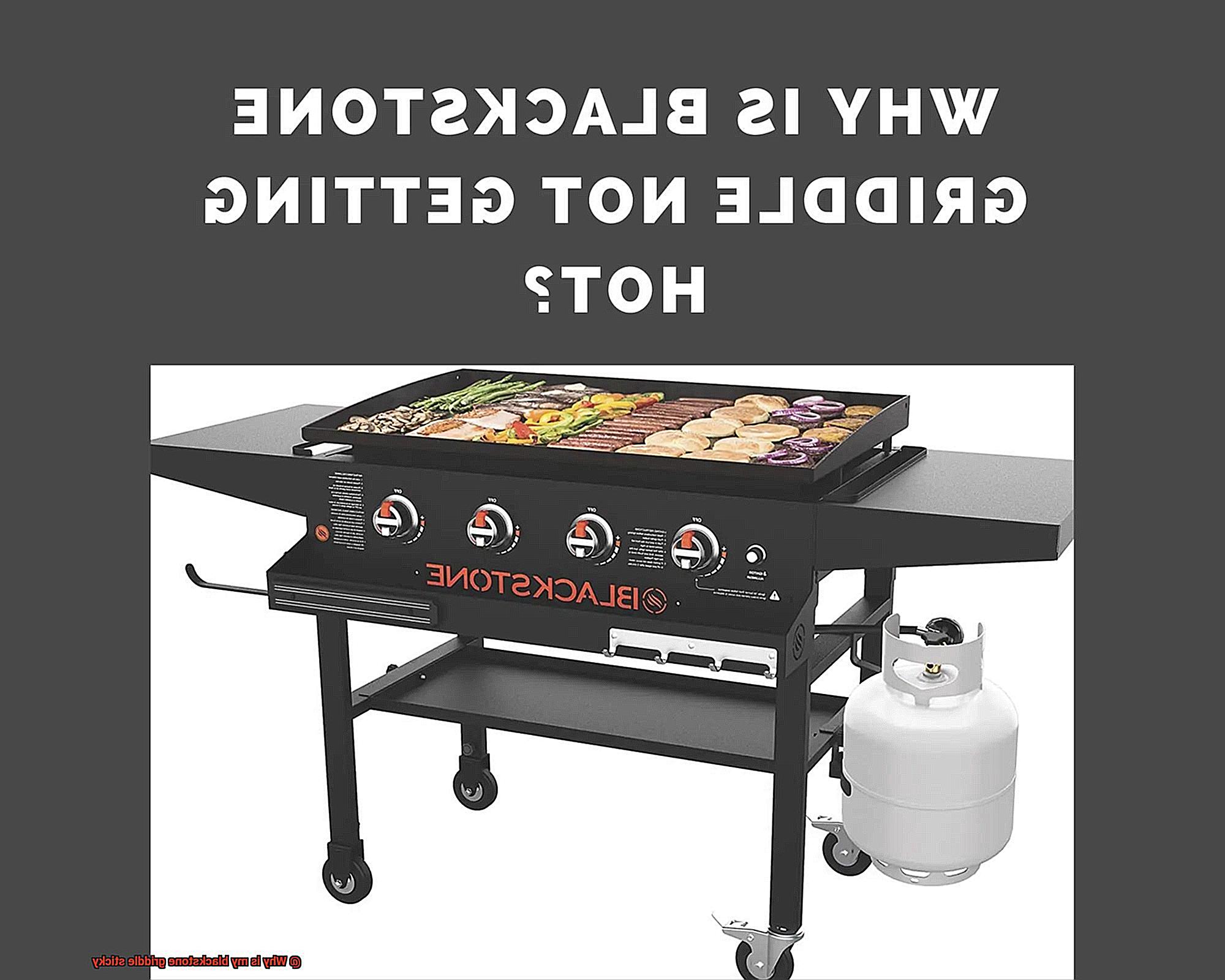
Contents
Reasons Why a Blackstone Griddle Becomes Sticky
If you’re a fan of grilling on your Blackstone griddle, you know how frustrating it can be when the surface becomes sticky. However, there are several reasons why this might happen, and they’re all preventable if you know what to do.
One of the most common causes of a sticky Blackstone griddle is the accumulation of cooking oil and grease on the surface. This happens over time when the oil and grease from your food stick to the surface and create a layer that becomes sticky. To avoid this, make sure to clean your griddle thoroughly after each use and avoid using too much oil or grease when cooking.
Another reason why a Blackstone griddle can become sticky is due to high heat. When cooking at high temperatures, sugary or starchy foods like pancakes can burn and stick to the surface, leaving behind a sticky residue. To prevent this, make sure to cook at the recommended temperature range for your griddle and use a non-stick cooking spray specifically designed for griddles.
Using the wrong type of oil or seasoning can also contribute to a sticky griddle surface. Oils with low smoke points can burn quickly and leave behind a sticky residue. Similarly, using too much seasoning or using a seasoning that contains sugar can cause the surface to become sticky. To avoid this, use high-quality oil with a high smoke point and be mindful of the amount and type of seasoning you use.
Lastly, not properly cleaning your Blackstone griddle after each use can cause it to become sticky over time. If you don’t remove all of the leftover food and grease from the surface, it can build up and lead to a sticky surface. To prevent this, clean your griddle thoroughly after each use using gentle cleaning solutions and tools specifically designed for use on griddles.
In conclusion, there are several reasons why a Blackstone griddle can become sticky, but with proper cleaning and maintenance, these issues are easily preventable. By taking care of your griddle and using the right products and methods, you can ensure that your cooking surface remains smooth and non-sticky for years to come.
Grease and Food Residue Buildup
As an expert on grease and food residue buildup, I have compiled some research notes to help you keep your griddle in top condition.
One of the main culprits behind a sticky Blackstone griddle is the buildup of grease and food residue. While it’s inevitable that these particles will accumulate on the surface during cooking, regular cleaning can prevent them from leaving a sticky residue that makes it difficult to cook on the griddle.
To prevent this buildup, it is crucial to clean the griddle after each use. Start by scraping off any excess grease and food particles using a spatula or scraper tool. Once the larger particles have been removed, use a damp cloth or sponge to wipe down the surface of the griddle. Avoid using harsh chemicals or abrasive sponges as they can damage the surface.
Another essential step to prevent sticking is to season your griddle regularly. Seasoning involves applying a thin layer of oil to the surface of the griddle and heating it until it begins to smoke. This creates a non-stick surface that helps prevent food from sticking to the griddle.
But what do you do if your Blackstone griddle has already become sticky due to a buildup of grease and food residue? Don’t worry. There are various methods for removing the buildup and restoring your griddle’s non-stick surface. One effective method is to use a mixture of water and vinegar to break down the buildup. Simply apply the mixture to the affected area and let it sit for several minutes before wiping it clean.
Overheating
This frustrating issue can be caused by overheating your griddle. Let’s dive deeper into the reasons behind this problem and how to prevent it.
Overheating occurs when the temperature of your griddle exceeds the recommended maximum temperature for cooking. This causes the cooking surface to break down and release oils that create a sticky residue. To prevent this from happening, it is crucial to follow the manufacturer’s instructions for operating your griddle and monitor the temperature while cooking.
If you do notice stickiness due to overheating, allow your griddle to cool completely before attempting to clean it. Start by using a scraper or spatula to remove any excess food or debris from the surface. Then, use a cleaning solution specifically designed for griddles and follow the instructions carefully. Avoid using harsh chemicals or abrasive cleaning tools as they can damage the surface of your griddle.
To maintain your Blackstone griddle and prevent overheating, clean it after each use and store it in a dry, cool place. Consider investing in a cover to protect it from dust and other environmental factors that can contribute to stickiness. Regular maintenance will also ensure that your griddle lasts for many years.
Wrong Type of Oil or Cooking Spray
Fear not, as there’s a simple solution to this problem—choosing the right type and amount of oil or cooking spray. As an expert on this topic, let me guide you through the do’s and don’ts of using oil and cooking spray on your Blackstone griddle.
Firstly, it’s important to note that not all oils and sprays are created equal. Certain oils and sprays have a lower smoke point, which means they burn at a lower temperature and leave a residue on the griddle surface. Olive oil and butter are two common culprits in causing a sticky surface due to their low smoke point.
To prevent your surface from becoming sticky, it’s recommended to use oils with a higher smoke point such as vegetable oil, canola oil, or avocado oil. These oils can withstand higher temperatures without burning and leaving residue on the griddle surface, resulting in a smooth cooking experience.
Additionally, choosing the right kind of cooking spray is crucial. Some sprays contain additives that can cause build-up on the griddle surface, leading to stickiness. To avoid this issue, use a cooking spray specially designed for high-heat cooking and without any additives.
Lastly, using too much oil or spray can also contribute to a sticky surface. It’s essential to apply just enough oil or spray to lightly coat the surface before cooking. Overusing them can cause excess build-up and lead to an unpleasant experience.
Cleaning Techniques to Prevent Sticky Griddle
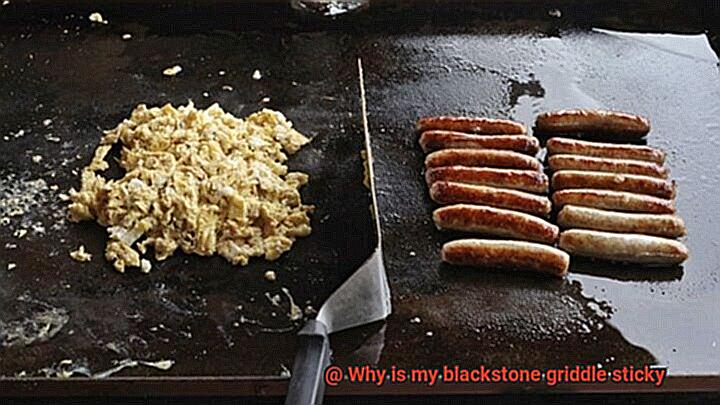
In this blog post, I’ll share some cleaning techniques that will leave your Blackstone griddle in top shape.
Firstly, use a scraper to remove any leftover food debris or grease on the griddle surface. A metal spatula or scraper specifically designed for griddles works best. Avoid using steel wool or abrasive cleaners as they can scratch the surface of your griddle. A clean surface is key to preventing stickiness.
Next, wipe the surface clean with a damp cloth or sponge and mild soap solution to remove stubborn stains or grease buildup. Remember to rinse the griddle thoroughly with clean water and dry it with a clean towel or cloth to prevent excess moisture.
If you’re looking for an alternative cleaning technique, try using a vinegar and water solution. Mix equal parts of white vinegar and water in a spray bottle and apply it onto the griddle surface. Allow it to sit for a few minutes before loosening any stuck-on debris with a scraper or spatula. Use a damp cloth to wipe the surface clean and rinse with water.
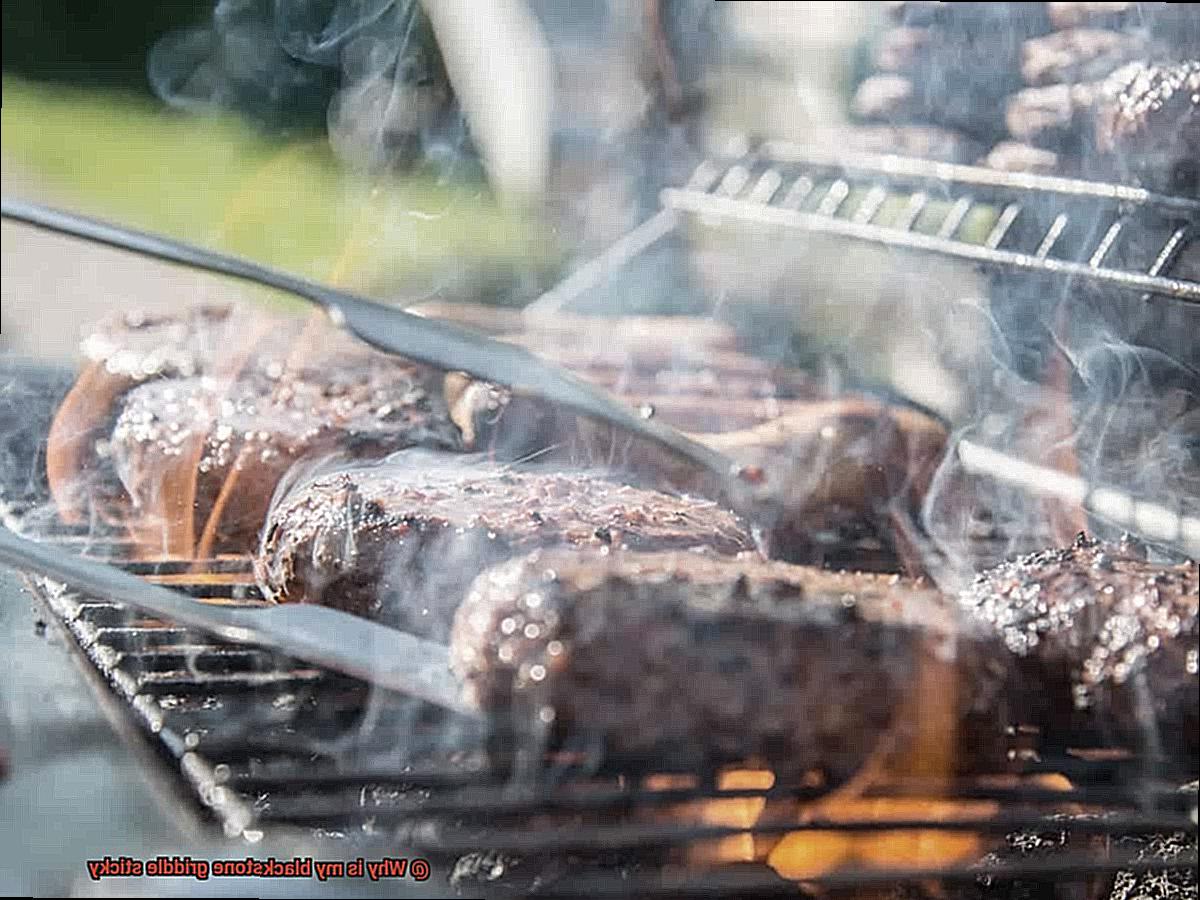
Lastly, baking soda and water solution is another effective cleaning technique for your Blackstone griddle. Mix 2-3 tablespoons of baking soda with water to form a paste and apply it onto the griddle surface. Let it sit for 10-15 minutes before scrubbing it with a soft-bristled brush or sponge. Rinse thoroughly with water and dry with a clean towel.
Avoiding Overheating the Griddle
If so, you know that taking care of your griddle is essential for a fantastic cooking experience. Overheating can cause your griddle to become sticky and challenging to clean; therefore, it’s crucial to avoid overheating the surface. Here are some tips and tricks that will help you avoid overheating your Blackstone griddle.
Monitor the Temperature
To prevent overheating, it’s essential to monitor the temperature of your Blackstone griddle. Most Blackstone griddles come with a built-in thermometer that allows you to keep track of the surface temperature. Keeping the temperature below 500 degrees Fahrenheit is recommended to avoid overheating.
Use Heat-Resistant Oil
Using heat-resistant oil is another way to prevent overheating. Oils like canola or vegetable oil are perfect for cooking on a Blackstone griddle as they have high smoke points and do not break down easily. Using heat-resistant oil prevents the oil from breaking down and forming a sticky residue on the surface of the griddle.
Clean Regularly
Regular cleaning is crucial to prevent buildup and residue on your Blackstone griddle. If you notice any sticky spots or residue, it’s time to clean your griddle. You can use a scraper to remove debris and grease, wipe with mild soap and water or a vinegar solution, or scrub with baking soda paste.
Choosing the Right Type of Oil or Cooking Spray
Your griddle could become sticky if you make the wrong choice, leaving behind a residue that is challenging to clean and could ruin the non-stick coating.
To prevent this from happening, always choose an oil with a high smoke point. The smoke point is the temperature at which oil begins to smoke and break down, losing its flavor and nutritional value. Opt for oils like vegetable, canola, grapeseed, or peanut oil as they have high smoke points and can handle high temperatures without burning or smoking.
Avoid using oils with low smoke points such as olive oil and butter since they can burn quickly and leave behind a sticky residue on your griddle. Instead, choose a cooking spray specifically formulated for griddles. These sprays have ingredients that won’t leave any residue on your griddle and are labeled safe for use on non-stick surfaces.
Here are some key takeaways:
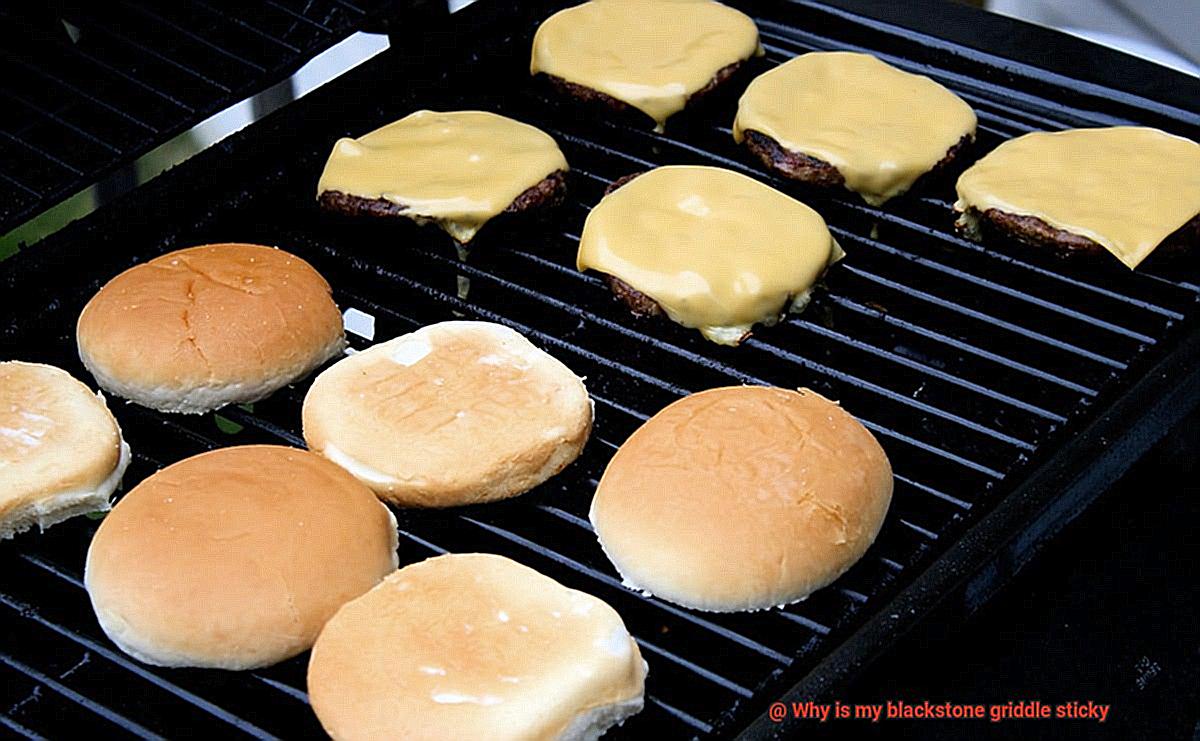
- Choose an oil with a high smoke point like vegetable, canola, grapeseed, or peanut oil.
- Avoid oils with low smoke points such as olive oil and butter.
- Consider using a cooking spray specifically designed for griddles.
- Always choose a spray that is labeled safe for use on non-stick surfaces.
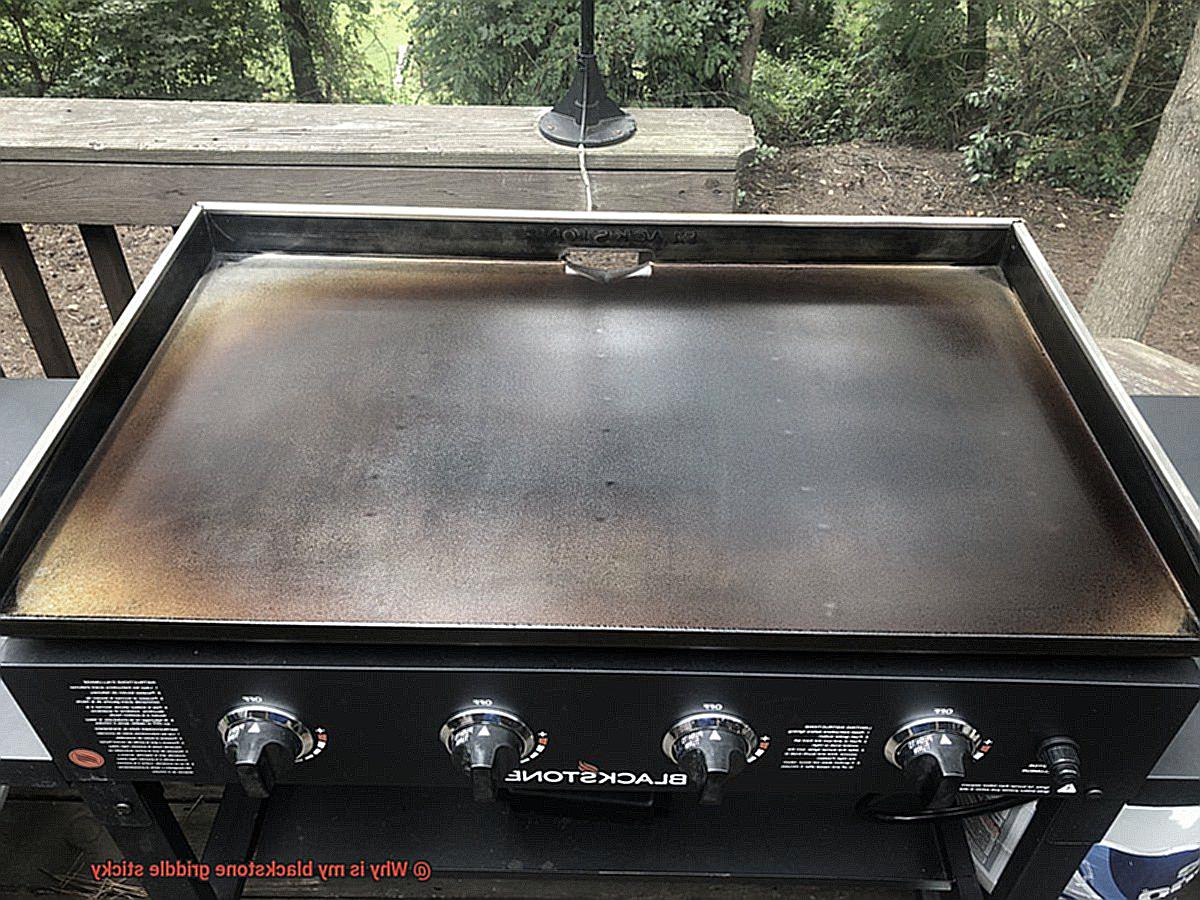
Benefits of Properly Maintaining Your Blackstone Griddle
By taking care of your griddle, you can prevent it from becoming sticky, extend its lifespan, and ensure that your food tastes delicious every time you cook.
One of the greatest benefits of maintaining your Blackstone griddle is that it prevents it from becoming sticky. A sticky griddle can be frustrating to work with, making it difficult to cook food evenly and ruining the taste of your meals. This occurs when grease and oil accumulate on the griddle’s surface after frequent use without proper cleaning. Over time, dirt and debris will also accumulate, making it even harder to clean. By cleaning your griddle after each use and using the right cleaning products, you can prevent grease and oil buildup, ensuring that your griddle stays non-stick.
Another reason why proper maintenance is crucial is that it extends your Blackstone griddle’s lifespan. Regular upkeep ensures that your griddle lasts longer, saving you money on purchasing a new one. By investing in its longevity, you’re guaranteed years of delicious meals and enjoyable cooking experiences.
Lastly, maintaining your Blackstone griddle ensures that your food tastes great every time you cook. When the griddle is sticky and dirty, it can affect the taste of your food. By keeping it clean and non-stick, you’re able to cook your meals evenly and achieve that perfect sear each time.
To properly maintain your Blackstone griddle, follow these simple steps: clean it after each use, use the right cleaning products (avoiding harsh chemicals and abrasive scrubbers), and store it properly. These steps are easy to follow and will keep your griddle in good condition for years to come.
Common Mistakes to Avoid When Cleaning Your Blackstone Griddle
To keep your griddle in top condition, there are certain mistakes you need to avoid when cleaning it. Here are some tips to help you keep your Blackstone griddle from becoming sticky and difficult to clean.
Firstly, make sure you always preheat your griddle before use. This step is crucial for evenly distributing heat and burning off any excess oil or food particles that may be stuck on the surface. Skipping this step can cause these particles to become sticky and make cleaning a nightmare.
Using too much oil when cooking on your Blackstone griddle is another mistake to avoid. While oil is necessary for cooking, using too much can cause a buildup on the surface and make it sticky over time. To avoid this, use a high smoke point oil and apply only a thin layer to the surface.
After every use, it’s important to clean your griddle thoroughly. Leaving food particles or oil on the surface for an extended period of time can cause it to become sticky and difficult to clean. Use a scraper or spatula to remove any excess food or debris, then wipe down the surface with a damp cloth or paper towel.
One common mistake that people make when cleaning their Blackstone griddle is using abrasive cleaning tools such as steel wool or metal scrapers. These can scratch the surface of your griddle and make it more prone to sticking. Instead, opt for a soft sponge or cloth with warm soapy water to clean the surface.
To summarize, here are some common mistakes to avoid when cleaning your Blackstone griddle:
- Not preheating the griddle before use
- Using too much oil
- Not cleaning the griddle after every use
- Using abrasive cleaning tools
Tips for Keeping Your Blackstone Griddle in Optimal Condition
As an outdoor cooking enthusiast, you know the importance of keeping your Blackstone griddle in optimal condition to ensure that it functions properly and delivers delicious meals every time you use it. One of the most common issues that users face with their griddles is stickiness. In this section, we will provide you with five tips and tricks for keeping your Blackstone griddle in optimal condition and preventing it from becoming sticky.
Regular Cleaning
The first and most important tip for keeping your griddle in good condition is to clean it regularly. After each use, allow the griddle to cool down and then use a scraper or spatula to remove any leftover food debris. Once the debris has been removed, use a soft cloth or paper towel to wipe down the surface with a mixture of warm water and soap. This will remove any remaining grease or oil and prevent them from building up over time.
Seasoning
Another way to prevent stickiness on your griddle is by seasoning it regularly. Seasoning involves coating the surface of the griddle with oil and heating it up until it forms a non-stick surface. To season your Blackstone griddle, first, clean it thoroughly and allow it to dry completely. Then, apply a thin layer of vegetable oil or flaxseed oil to the surface of the griddle with a paper towel or brush. Heat the griddle on high for about 30 minutes, or until the oil begins to smoke. Turn off the heat and allow the griddle to cool down completely before wiping away any excess oil.
Mindful Cooking
Certain foods are more prone to sticking than others, such as eggs or pancakes. To prevent these foods from sticking, use a non-stick cooking spray or butter before cooking them on the griddle. Additionally, avoid using metal utensils on the surface of the griddle as they can scratch it and cause it to become sticky over time.
Proper Storage
When you’re not using your Blackstone griddle, make sure to store it in a dry place. Moisture can cause rust and other damage to the surface of your griddle, which can make it sticky and difficult to use. Covering your griddle with a protective cover when not in use can also help prevent moisture from building up on the surface.
Use the Right Oil
Using the wrong type of oil or cooking spray can also contribute to stickiness. Some oils have a low smoke point and can leave behind a sticky residue when heated at high temperatures. Using a high-quality oil with a high smoke point or a non-stick cooking spray specifically designed for griddles can help prevent a sticky surface.
How to Restore a Sticky Blackstone Griddle
Restoring it to its original non-stick state is easier than you think. Here are five simple steps to follow:
Step 1: Thoroughly Clean the Griddle
Before restoring your griddle, make sure to clean it thoroughly. Use a scraper to remove any leftover food or debris, and then wipe down the entire surface with a cleaning solution and water. Rinse off all the cleaning solution before moving on to the next step.
Step 2: Season the Griddle
Applying oil to the surface is the next step in restoring a sticky Blackstone Griddle. Choose an oil with a high smoke point, such as vegetable oil, canola oil, or flaxseed oil. Pour a small amount of oil onto the surface of the griddle and use a paper towel or brush to spread it evenly across the entire surface. Heat up the griddle until it begins to smoke, then repeat this process several times until you achieve the desired non-stick surface.
Step 3: Address Grease/Oil Buildup
If your griddle is still sticky after cleaning and seasoning, there may be a buildup of grease or oil. To remove this buildup, use a degreaser. Apply the degreaser to the surface of the griddle and let it sit for several minutes before wiping it off with a clean cloth.
Step 4: Remove Rust Buildup
Rust buildup can also cause your Blackstone Griddle to become sticky. To remove rust, use a wire brush to scrub it off and then apply a rust remover solution. Once you have removed all the rust, season your griddle again as described in Step 2.
Step 5: Maintain Your Griddle
Proper maintenance is key to keeping your restored Blackstone Griddle in great condition. After every use, clean it thoroughly and apply a thin layer of oil to prevent it from becoming sticky again in the future.
kTQV7-xbWdE” >
Conclusion
After exploring the possible reasons why your Blackstone griddle might be sticky, it’s clear that a little extra care and maintenance can go a long way.
By regularly cleaning and seasoning your griddle, you can ensure that it remains in top condition for all your cooking needs.

